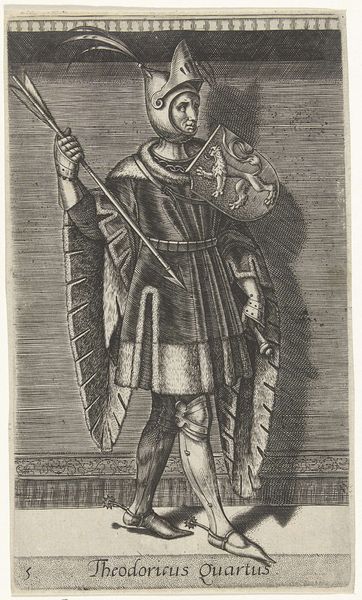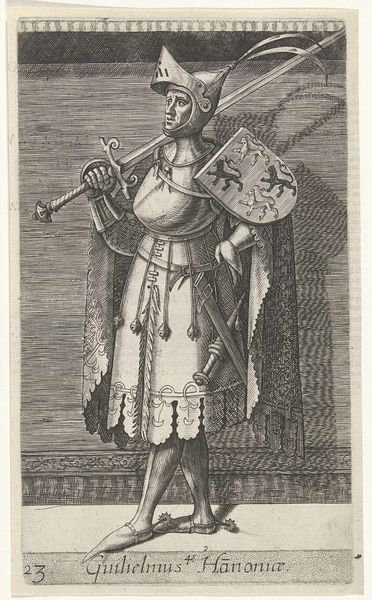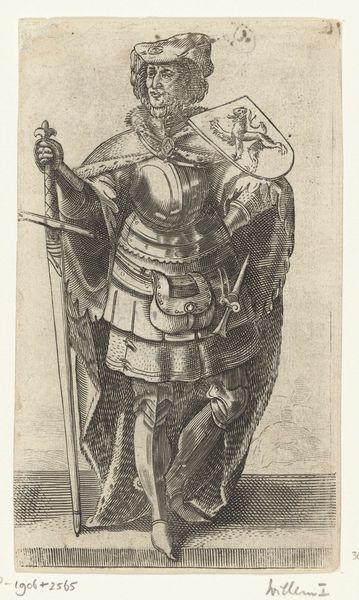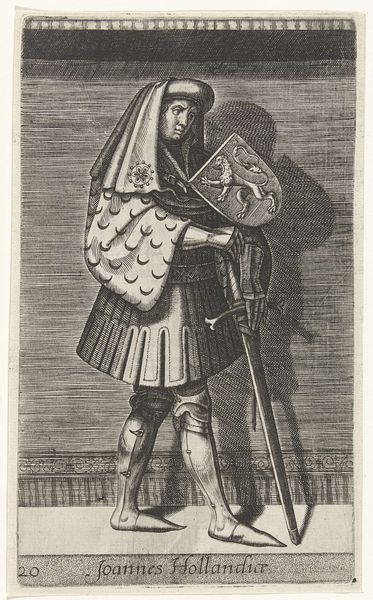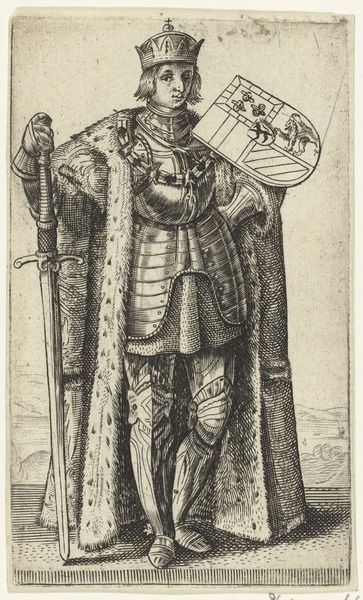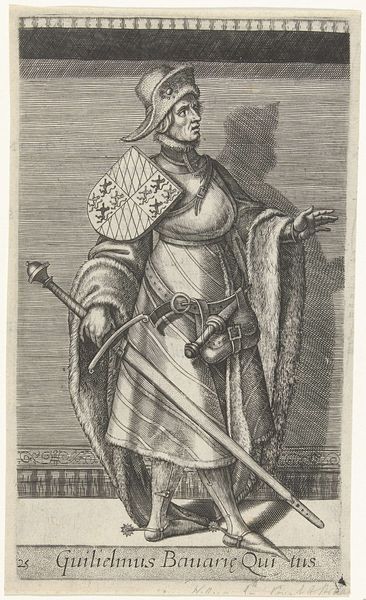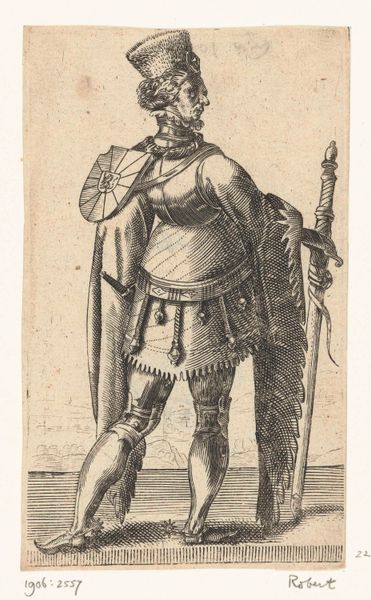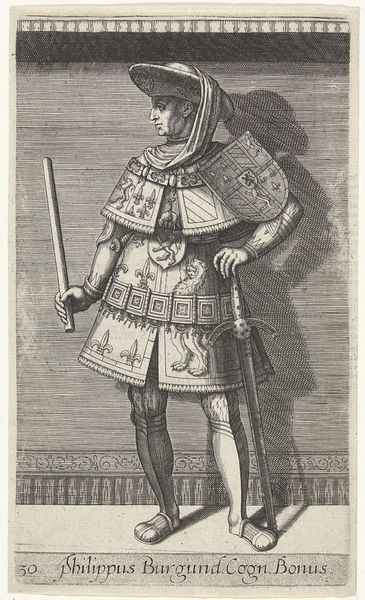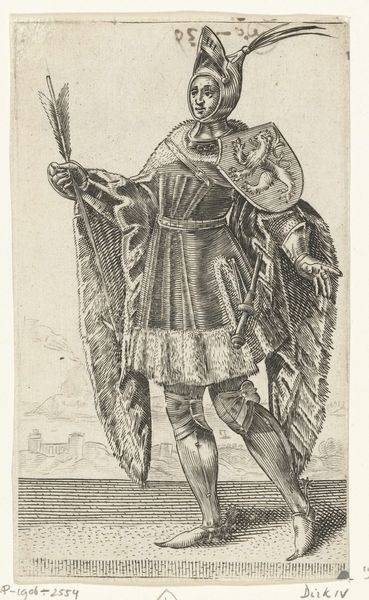
Portret van Godfried III met de Bult, hertog van Neder-Lotharingen en graaf van Holland 1578
0:00
0:00
print, engraving
# print
#
caricature
#
11_renaissance
#
history-painting
#
engraving
Dimensions: height 205 mm, width 120 mm
Copyright: Rijks Museum: Open Domain
Curator: Let's turn our attention to this fascinating print. Philips Galle created it in 1578. It's a portrait, engraved on laid paper, depicting Godfried III with the Hunch, Duke of Lower Lorraine and Count of Holland. It’s held here at the Rijksmuseum. What are your initial thoughts? Editor: The figure seems almost comical. Despite the full armor, the elaborate crest, there’s something vulnerable, even a bit absurd, in his posture and expression. It is so detailed and yet manages to be almost, cartoonish. Curator: Indeed. While seemingly a straightforward historical portrait, the slightly exaggerated features suggest it might function as a caricature, albeit within the conventions of late Renaissance printmaking. These images served more than simple representation. They played into contemporary debates about power and legitimacy. The figure stands with an open hand as if taking an oath. Editor: And who decided on this particular depiction? It's interesting to consider what it might have been used for in political discourse, if it was attempting to undermine this duke or perhaps overcompensate for an image he may have struggled with by presenting a strong facade. Curator: Precisely! Prints such as this circulated widely. Their visual rhetoric could be incredibly potent in shaping public opinion and bolstering or attacking the reputation of those in power. They influenced viewers profoundly, regardless of the factual reality of their depictions. Editor: This speaks to the enduring power of images and their use and abuse in solidifying regimes of power and shaping the socio-political landscape. We can learn a great deal by viewing it with a 21st-century understanding of intersectional narratives focused on identity and gender. I see echoes here that inform the contemporary construction of the spectacle. Curator: That is a potent observation! We began thinking of it simply as a historical record. Hopefully we've teased out a bit of the nuanced meanings imbedded within. Editor: Definitely, it's another way to consider history; this helps me place my focus when interpreting a portrait such as this one.
Comments
No comments
Be the first to comment and join the conversation on the ultimate creative platform.
